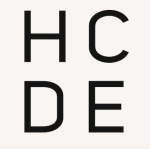Overview
CS4HS (Computer Science for High School) is a workshop program, sponsored by Google, for high school and middle school teachers of math and science to explore principles and applications of computer science and computing education. Sessions are held around the world each summer with the goal of helping teachers build enthusiasm for computing among their students.
 At the University of Washington’s CS4HS Washington, hosted by the UW’s Department of Computer Science and Engineering, I give a workshop on Physical Computing. Physical computing, sometimes called tangible computing, is the sensing and controlling of the physical world (as opposed to the virtual or online) with hardware and software.
At the University of Washington’s CS4HS Washington, hosted by the UW’s Department of Computer Science and Engineering, I give a workshop on Physical Computing. Physical computing, sometimes called tangible computing, is the sensing and controlling of the physical world (as opposed to the virtual or online) with hardware and software.
The goal of this workshop is for participants to learn about and experiment in a hands-on environment with Arduino and Processing, two of the tools that are used in teaching students of all ages about physical computing.
 Arduino is an inexpensive, open-source, integrated hardware and software prototyping platform for creating electronics-based interactive systems. It was developed for artists, designers, hobbyists, tinkerers, and anyone interested in creating interactive objects or environments in a very user-friendly manner.
Arduino is an inexpensive, open-source, integrated hardware and software prototyping platform for creating electronics-based interactive systems. It was developed for artists, designers, hobbyists, tinkerers, and anyone interested in creating interactive objects or environments in a very user-friendly manner.
 Processing is an open-source software system for easily creating images, graphics, animations, and interactive systems on computers. Initially created to serve as a software sketchbook and to teach computer programming fundamentals within a visual context, Processing has evolved into a creative development tool for artists, designers, and engineers, both hobbyist and professionals alike.
Processing is an open-source software system for easily creating images, graphics, animations, and interactive systems on computers. Initially created to serve as a software sketchbook and to teach computer programming fundamentals within a visual context, Processing has evolved into a creative development tool for artists, designers, and engineers, both hobbyist and professionals alike.
Here is a short video about this workshop from a previous year’s session:
[vimeo 36033701 w=500 h=275]
Files
Links
| Thermometer | ||
| Sample Exercises | “Hello, World! Exercises” | |
| Roosevelt HS Intro to CS | Syllabus + Course website | |
| UW HCDE Physical Computing | Course website | |
| Arduino website | arduino.cc | |
| Resource List | Arduino Resources |








